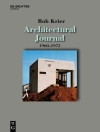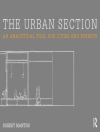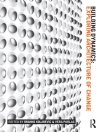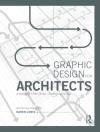In ‘Leadwork, Old and Ornamental and for the most part English, ‘ W. R. Lethaby presents a meticulous exploration of the art and craftsmanship of leadwork, emphasizing its historical significance and ornamental applications, particularly within the English context. Lethaby deftly intertwines detailed descriptions with rich illustrations, revealing the intricate techniques used by artisans and the aesthetic significance of lead in architecture and decorative arts from various periods. His literary style is both informative and evocative, reflecting his deep appreciation for the aesthetic qualities of lead and its transformative potential in design. W. R. Lethaby, a leading figure in the Arts and Crafts Movement and a prominent architect and designer, draws on his extensive experience and scholarly insight into medieval art and architecture, which undoubtedly fueled his passion for documenting leadwork’s manifold uses. His background in architecture and historical preservation positions him as a credible and authoritative voice, giving readers not only a technical manual but also a narrative celebrating the cultural heritage embodied in leadwork. Ideal for historians, architects, and enthusiasts alike, Lethaby’s book serves as both a reference work and a tribute to a craft often overlooked in the broader canon of decorative arts. This volume is essential for anyone seeking to understand the interplay between material and artistry in the context of English architectural heritage.
关于作者
William Richard Lethaby (1857–1931) was a distinguished English architect and design theorist, noted for his significant contributions to the Arts and Crafts movement during the late 19th and early 20th centuries. Educated at the South Kensington School of Art, Lethaby emerged as a prominent thinker and practitioner who sought to unify artistic expression and craftsmanship. His writings display an ardent advocacy for the integration of design and functionality. Lethaby’s ‘Leadwork, Old and Ornamental and for the most part English’ is a reflection of his extensive research and passion for historical and cultural aspects of architecture. The book serves as a pivotal resource on the craft of lead ornamentation, an aspect that exemplifies Lethaby’s dedication to traditional methods and materials in construction. Known for his scholarly approach and meticulous exploration of historical architecture, Lethaby’s literary contributions extend beyond the study of leadwork, encompassing broader themes of design ethics, educational reform in the arts, and architectural history. His works resonate with thoughtful insights into the nexus of art, craft, and society, rendering his scholarship integral to the discourse on the philosophy of design.












